Non-timber values in sustainably managed native forests
Jacqui Aimers, David Bergin and Gerard Horgan, New Zealand Tree Grower November 2020.
New Zealand relies on forests for significant benefits. They include clean air and water, stable soils, biodiversity conservation, carbon sequestration, distinctive natural landscapes, spiritual and mental well-being, cultural identity, international branding and environments for outdoor recreation and tourism. However, these non-timber values are often overlooked in land-use decision making. Fortunately, there is now increased awareness of the importance and vulnerability of this natural capital, as shown by the government’s One Billion Trees programme.
Non-timber values are outlined in this article are three linked categories −
- Non-timber forest products
- Environmental services
- Socio-economic and cultural services.
Non-timber forest products
Honey production
Apiculture relies on native forest species for early season nectar flow and pollen. With honey exports of $348 million of mostly manuka honey in the 2017/18 season, New Zealand is the world’s second-largest honey exporter. Honey with high levels of unique manuka factor is particularly valuable. Honey exports for the year ending June 2020 are expected to be around $330 million, lower than in the previous year because of lower prices and trade disruption due to Covid-19.
Extensive areas of naturally regenerating manuka and more recently, deliberately established commercial plantations, support production of high unique manuka factor honey. Economic returns compare favourably with those for alternate land uses. As well as manuka, markets for mono-floral honey have been developed for other species, including southern rata, rewarewa, kamahi and tawari.
Plant extracts and crops
For hundreds of years, Maori harvested herbs from forests for natural healing. Recently there has been a resurgence of interest in using native plant products for medicinal, natural health remedies and skincare. Examples include manuka and kanuka oils − growers can obtain $500 to $600 a tonne for raw foliage from which oil is extracted. All of these have anti-microbial effects or other medicinal properties. Harakeke or flax seed is used to make flax seed oil, which has high nutritional value and also benefits the skin if applied externally. Sphagnum moss is a renewable crop worth over $5 million dollars a year in exports.
There is also potential for growing understory crops of native species for culinary and medicinal purposes. The economics of growing kawakawa, dried leaves fetch from $75 to $300 a kilogramme, have been investigated by Landcare Research. The medicinal properties of kawakawa are greater when grown on the edge of stands where it gets more light, and reputably also greater if the leaves are damaged by insects.
Hunting, fishing and foraging
Commercial and recreational hunters have obtained game meat from our forests for well over a century. Commercial hunting takes place on a limited scale but recreational hunting is a widespread and significant activity. Possums are trapped or shot for fur, pelts and pet food. Trade in possum skins dropped dramatically during the global financial crisis and has been slow to recover. However, the development of a unique blend of possum fibre with merino wool to create a lightweight, high-quality yarn with exceptional thermal properties has re-invigorated the industry.
Wild food is culturally important and increasingly finding a place in contemporary local cuisine. For example, pikopiko − the unfurling new fronds of hen-and-chickens fern horopito − used as a pepper and for hot sauce, and harore or bush mushrooms can all now be found on menus. Forested catchments are also important for freshwater resources and mahinga kai − traditional food harvesting. Whitebait, eels and koura are very dependent on the clean, fresh water provided by native forest catchments.
Environmental services
Environmental services, although vitally important to our economy, are not usually factored into the economic value of forests. Instead, they are widely regarded as free and a gift of nature.
Carbon sequestration
Carbon sequestration is the only environmental service which currently is readily monetised via the Emissions Trading Scheme. Expansion of forest resources has been identified as a major method of meeting climate change commitments. Recent changes to the Emissions Trading Scheme have resulted in a more robust carbon market and stability in carbon prices, which has encouraged afforestation. This is important as studies by Landcare Research indicate that afforestation is the most economically and environmentally viable land use for erosion-prone hill country.
Tane’s Tree Trust has developed an indigenous forestry carbon calculator. This can help people calculate how much carbon their planted native stands are fixing, or determine how many native shrubs and trees they need to plant to offset their carbon emissions.
Habitat provision and biodiversity conservation
Native forests support a much greater biodiversity of indigenous species than exotic forests. Although native insectivorous species and raptors are frequently found in radiata pine plantations, fruit and nectar feeding birds depend largely on native forests for their habitat.
By international standards, the amount of New Zealand public land set aside for conservation is high. But some ecosystems, particularly lowland forest, wetland-forest complexes, and coastal forest are poorly represented. This is partly because limited incentives exist for managing existing forest and establishment of new native forest on private land is declining. A stable carbon market and government initiatives such as the One Billion Trees programme may help to rectify this. However, there is also a compelling argument for compensating land owners who safeguard biodiversity in the wider public interest, the flip side of the principle of ‘polluter pays’.
The big question is – How can habitat provision and biodiversity conservation be quantified in economic terms? The Department of Conservation has extensive guidelines for measuring the value of biodiversity in smaller-scale settings. The importance is recognised of secondary ecosystems, which are often the only available habitat in some regions. However, the role of sustainably managed native forests in biodiversity conservation needs better recognition, particularly considering threats to biodiversity, high extinction rates, under-representation of some vegetation types and limited resources. Regenerating and planted native forests can have an important role in biodiversity conservation.
Urban forests and environmental services
Urban forests provide green infrastructure, regulating services for water quality and storm water and reducing flooding, erosion and water contamination. Trees also provide shade, protect people from harmful ultraviolet radiation and reduce urban heat island effects and heat stress via the cooling effect of evapo-transpiration. These services are increasingly important in an era of climate change.
Urban trees also help with privacy and noise control, absorb air pollutants and intercept air-borne particulate matter, improving air quality and health. Urban areas often sit on the convergence of several habitats and are therefore biodiversity hotspots. Remnants of natural vegetation and ecologically restored areas help connect natural areas and provide wildlife corridors from the coastline to the mountains.
Erosion control and catchment protection
Forests are vital for stabilising soils, reducing sedimentation, moderating water flows and protecting downstream ecosystems and infrastructure from sedimentation and floods. These are all increasingly important in an era of climate change.
The frequency and intensity of floods is greater for deforested land compared to the same area in trees. Many regions of New Zealand are vulnerable to erosion. A lot of topsoil has been lost and continues to be lost from unstable hill country after clearance of native forest and conversion to agriculture. Estimates of the annual cost of erosion due to lost production, sedimentation and damage to downstream infrastructure and ecosystems for New Zealand range from $124 to $263 million.
In 2017 Scion’s Richard Yao and colleagues estimated that $263 million a year of erosion costs could be avoided if another 2.9 million hectares of forests were planted. Grants for planting erosion-prone land such as those available from the Hill Country Erosion Fund also indicate value or society’s willingness to pay.
Around a million hectares of land are estimated to be at serious risk of erosion, a risk which could be reduced by tree planting. Another 1.45 million hectares of marginal pasture land would probably revert to native forest if livestock was removed, and would subsequently provide multiple environmental services, including soil stabilisation. Research shows that compared with similar land under pasture, soil eroded by storms is reduced by 50 to 90 per cent where native forest is retained or replaced, either by allowing reversion to native species or by planting.
Unharvested forests, or forests managed under continuous cover regimes, protect erodible land better than production forests. Clear felling and road construction result in sediment run-off. For land under radiata pine regimes there is an increased risk of erosion for approximately six years after crop harvest while the root systems of the logged crop decay and the new crop becomes established.
In 2014 Scion researchers used an erosion model to estimate the value of avoided erosion in exotic production forest and native forest in the Ohiwa catchment. The avoided erosion and catchment protection value were estimated in 2020-dollar values at $131 a hectare each year for exotic forest and $180 a year for native forest. The higher value for native compared to exotic forest is partly attributable to the avoided effect of clear fell harvesting.
High-profile intense weather such as in Tolaga Bay and the Tasman District in 2018 highlight the potential for damage to downstream infrastructure from logging debris and sediment from clear fell operations. A result of this is that for some places and people, social licence to operate and community acceptance of clear fell regimes has become a concern.
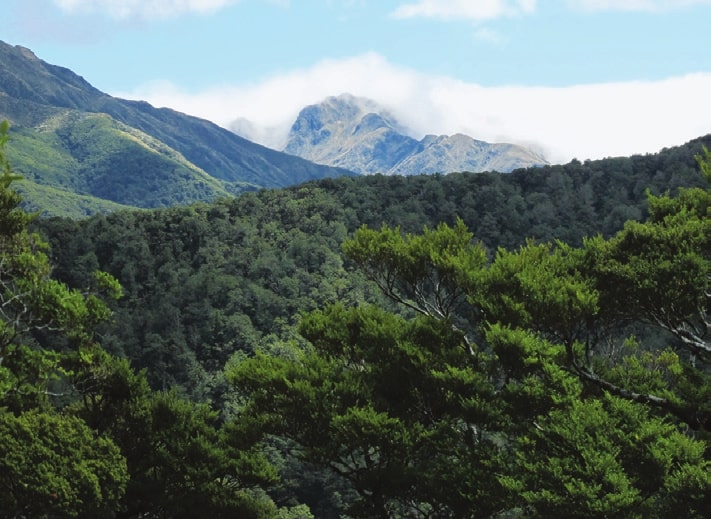
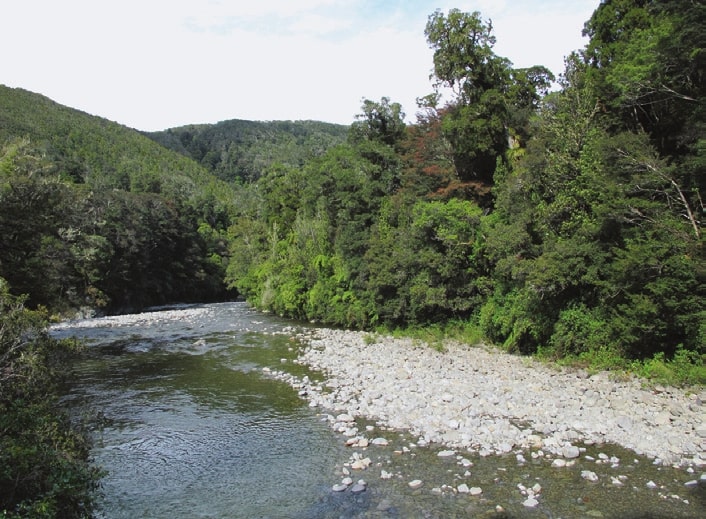
Water yield and quality protection
Water yield from forests can be negative, with water from forested areas potentially lower compared with other land uses. This could be a significant problem in arid or semi-arid climates where there are water shortages. There is limited information on this in New Zealand and more research is needed There are varying views, ranging from a perceived negative effect of planted forests on water yield in water-sensitive catchments to a perceived positive effect of water storage during wetter months and supply of water in drier months.
Forests have extremely low nutrient leaching compared with pastoral agriculture and recycle excess nutrients from intensive agriculture. Nitrates and phosphates entering waterways stimulate algal blooms and aquatic weed growth, which reduce amenity values and poses health risks.
These environmental services currently have no direct market value in most of New Zealand but have implicit value as regional councils increasingly apply regulations to protect water quality – already demonstrated in the Lake Rotorua and Lake Taupo catchments. Both catchments have nutrient capping, nutrient trading and restrictions preventing intensification of land use. Restrictions on land use and nutrient run-off are likely to be more widely applied in the future.
Catchments dominated by native vegetation or exotic forest have better water quality than sites dominated by pasture or urban areas. Unharvested forests, or forests managed under continuous cover regimes, are also better than clear fell regimes for maintaining water quality. Riparian planting can help reduce nitrate leaching and phosphate loss, but do not provide a complete solution.
Central and local government committed $526 million in the decade 2006 to 2016 for cleaning up waterways. This indicates the value of clean water and the value of environmental services lost with the loss of forest cover and intensification of land use.
Pollination services
Pollination is important for the horticultural sector, for pastoral agriculture and for many native plants. Apiculture relies on native forests, particularly for early season nectar flow and pollen which are critical for building up bee colonies. Native forests provide habitat for native pollinators, such as native bees, honeyeater birds, geckos, skinks and bats.
Native riparian planting in rural areas can help with pollination services. Data on the contribution of native forest to pollination services is limited, but is estimated to be of the order of $220 a year per hectare.
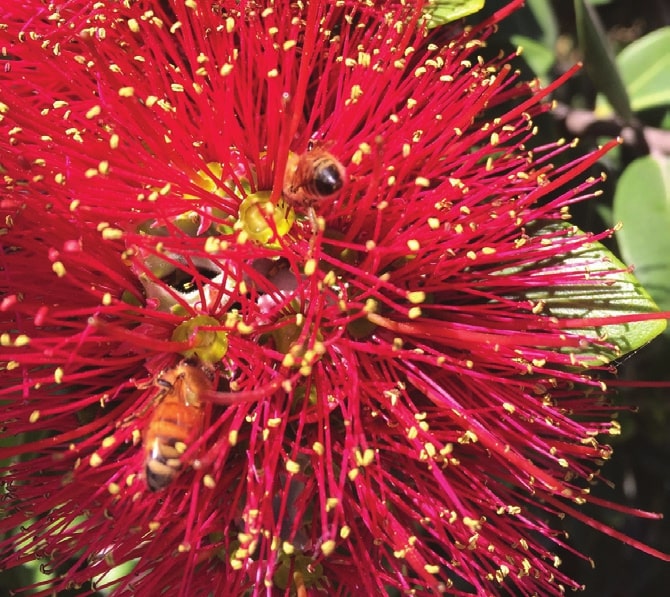
Spiritual and cultural services
Forests provide general amenity and ambient environments which underpin cultural and spiritual services. These are particularly difficult to quantify economically. The socio-cultural approach to valuation may be appropriate here, with a holistic method based on values which society attributes rather than monetary ones.
Spiritual and cultural values
Natural environments and the native species they support underpin our unique sense of place and influence our international reputation. Maori traditionally have a spiritual connection with the natural environment. People care for ecosystems − manaaki whenua, and ecosystems care for people − manaaki tangata. Maori have had to adjust to the loss of large areas of native forests, culturally significant flora and fauna and traditional food sources, which have affected cultural values and well-being. Native forests are also vital for maintaining the mauri or life force of freshwater ecosystems and mahinga kai.
The following principles are relevant −
- Kaitiakitanga, the guardianship of natural resources
- Whanaungatanga, community connectivity, including connection to the natural environment
- Turangawaewae, a sense of place and identity.
A Waitangi Tribunal report documents the fundamental importance of treasured native flora and fauna species to modern Maori. Access to these resources is important for cultural identity, health and well-being. This includes rongoa − traditional medicinal use of plants, native species for kai, timber for carving and plant materials for weaving.
Native forests and aesthetic values
Native forests are an important component of the natural landscapes. International research identifies the importance of water views and natural forest in aesthetic landscape values. Native forests are mapped in many significant landscape designations in district and regional plans throughout New Zealand. However, aesthetic landscape values are subjective and extremely difficult to monetise.
Tourism is, or was until Covid-19, our biggest export industry and a major source of employment. The pandemic will have a significant medium-term effect on the economy but in time, it is expected that tourism will rebound. Forests, and particularly native forests, contribute to ambient environments for tourism and to environmental services vital for tourism. However, it is difficult to definitively quantify the overall contribution native forests to the success of the tourism industry.
Nature-based tourism activities, mostly based in native forests, are among the principal attractions for overseas and domestic visitors. Examples include −
- Canopy Tours in Rotorua provide zipline tours through old-growth forest and also funds an extensive conservation programme
- Fenced eco-sanctuaries such as Zealandia in Wellington, the first fenced urban eco-sanctuary, Waikato’s Sanctuary Mountain Maungatautari and Orokonui Ecosanctuary, close to Dunedin.
- Foris Eco-tours, an outdoor guiding company which specialises in natural heritage education and eco-tourism.
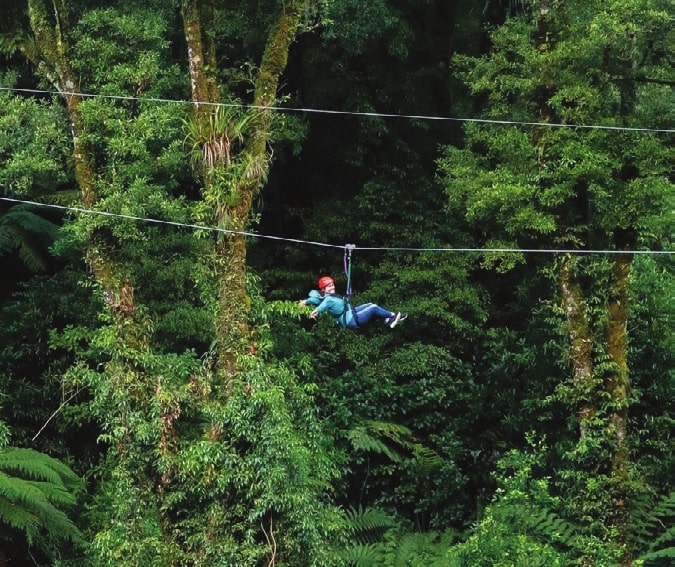
Ecotourism ventures such as these demonstrate that viable businesses can be based on ecotourism and conservation values. Visitor numbers demonstrate willingness to pay for biodiversity conservation and experiencing nature.
Conservation of native species
Natural biodiversity is essential to our culture, identity and well-being. We call ourselves Kiwis and proudly display the native silver fern as a national symbol, indicating the importance of native species, especially endemic ones, to our national identity.
The value of conservation has been researched by, among others, Richard Yao and his colleagues. In 2008 a survey assessed how willing New Zealanders were to participate in biodiversity enhancement. Of over 700 observations, 57 per cent of respondents were willing to volunteer to plant trees with a clear preference for native rather than non-native trees. In 2014, a survey of over 1,500 households indicated an average willingness-to-pay $264 a year for five years to conserve important native species in plantation forests. Nationwide, the thousands of people who volunteer for ecological restoration and biodiversity conservation projects demonstrate the depth of community support and the value people put on conservation.
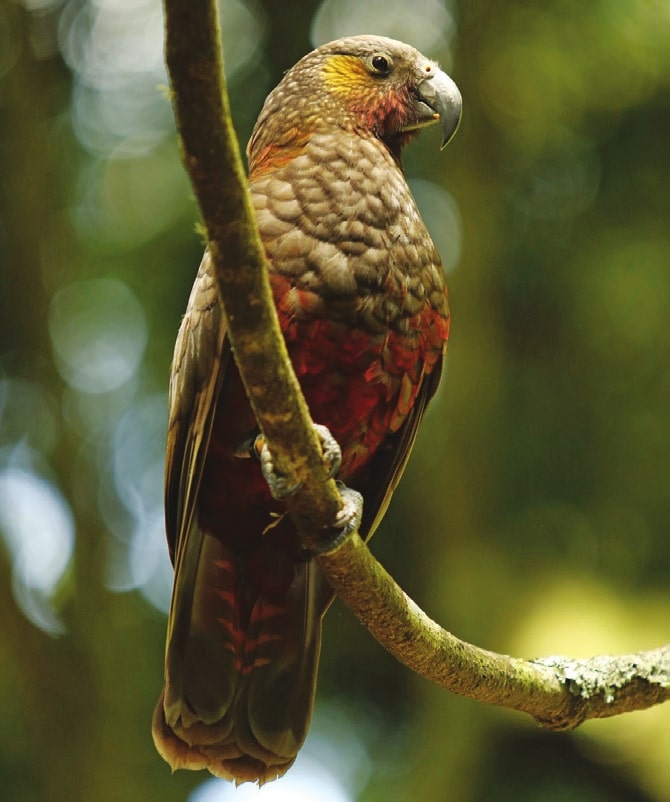
Forests and outdoor recreation
New Zealand is internationally renowned for outdoor recreation. Hunting and fishing are important culturally and for household subsistence in rural areas. In addition, many city dwellers enjoy recreational hunting and fishing. New Zealand has a strong international reputation for game hunting and fishing, with guided expeditions creating considerable tourism revenue.
A 2015 nationwide survey found spending time outdoors was important for just under 90 per cent of respondents, with forests featuring highly in places visited. The most consistently popular activities in surveys between 2011 and 2015 were short walks on tracks, day walks, mountain biking and multi-day tramping.
Investment in four-wheel drive vehicles and other equipment, cost of travel and the value of time taken off work to participate in outdoor activities, along with the value of game meat and fish caught recreationally, provide an indicative way of monetarising the value of these activities. The non-market benefits of outdoor recreation estimated by Pamela Kaval and Richard Yao in 2007 based on spending on associated fuel, equipment, food, lodging, and guides, adjusted to 2020-dollar terms is over $6 billion annually. This exceeds the estimated market benefits of approximately $5 billion.
Human well-being in urban areas
Urban trees provide a highly valued primary form of contact with nature for many city dwellers. Trees contribute to quality of life, social capital and mental well-being. However, while introduced tree species provide many ecosystem services in urban settings, it is only native species which provide opportunities for education on natural heritage, underpin our unique sense of place, cultural values and add a unique difference which is potentially important for tourism and international perceptions.
Studies here and abroad have demonstrated the benefits of urban green space for human well-being. In a 2007 New Zealand study, the roles perceived as being most important were aesthetics, bringing nature into the city, providing a habitat for wildlife and fresh air. Shade, carbon storage and protection from wind and noise were also important.

Employment and training opportunities
Quantifying figures for employment and training opportunities based on non-timber values is difficult because employment data is generally not categorised in sufficient detail. However, examples where opportunities exist include −
- Ecotourism and supporting hospitality industries
- Industries based on outdoor activities
- Native plant nurseries, community-based and commercial
- Native forestation and conservation projects
- Commercial industries involving non-timber forest products.
Brand image
Forests, particularly native forests, have played a vital role in the Clean, Green and 100% Pure New Zealand branding which underpins tourism and agriculture via scenic values, provision of ambient environments for outdoor recreation and tourism, and protection of water quality and freshwater ecosystems. The Ministry for the Environment suggested in 2001 that the potential loss to the country would be around a billion dollars, revalued in 2020 terms, if the environmental perceptions of tourists worsened. It is difficult to quantify the part which native forests play in this image, but it is undoubtedly substantial.
Companies are increasingly using green branding to gain market share and offset their operational environmental effects. Trees that Count has created a market where businesses, organisations and individuals can donate funds to provide native planting stock matched to community groups involved in planting programmes.
Discussion and conclusions
Recognising non-timber values as quantifiable and valuable will encourage afforestation. The problem is that apart from sequestered carbon and income from a few other non-timber products, most non-timber benefits are currently difficult to monetarise. Non-timber valuation exercises also risk being accused of attempting to value the invaluable by putting a dollar value on critical or essential services. In many cases they are quite site-specific. Therefore, analysis should be case-by-case, with qualitative values included in addition to monetary ones.
Many non-timber values are attributable to trees and forests, irrespective of whether they are native or exotic. Some are specific to whether the trees are native or not. The aggregated non-timber values of native forests would probably be comparatively greater than those of exotic forests, particularly where scenic, cultural and spiritual, conservation of indigenous biodiversity and protection of erodible land, water quality, and downstream infrastructures and ecosystems are important aspects of the valuation.
Sustainably managed native forests warrant a much higher profile as an economically viable land use. This could legitimately be achieved by including non-timber values in economic analyses. Permanent native forests managed solely for non-timber values, or under continuous cover regimes, are likely to have the highest aggregated non-timber values. Native planting in riparian areas is likely to have particularly high aggregated non-timber values.

 Farm Forestry New Zealand
Farm Forestry New Zealand

